| Designation: | Ratel |
 |
|---|---|---|
| Manufacturer: | Reumech OMC | |
| Product type: | Armoured Vehicles | |
| Name: | Wheeled armoured personnel carrier |
The first prototype of the Ratel was completed in July 1974, followed by four preproduction vehicles, the first completed in 1976. The first production models were designated the Mk 1 and were followed in 1979 by the Mk 2, final deliveries of which were made in early 1987. The differences are mainly the result of operational experience in Namibia and long-range penetration raids into Angola.
Most of the modifications were subsequently retrofitted to earlier vehicles when they returned for overhaul.
The Ratel Mk 3 upgrading programme commenced in 1985 and mainly included the following modifications to the vehicle:
- Improved cooling system
- Improved bush protection
- Automatic cocking system for the 20 mm G12 cannon built by Denel Land Systems
- Smaller functional modifications to the vehicle
It is understood that the South African National Defence Force had a total of 1,243 Ratel vehicles in service, plus an additional 53 in the Swift anti-tank vehicle configuration. This model is only in service in South Africa.
As previously stated, production of the Ratel IFV was completed in 1987 and marketing has now ceased. A number of Ratel IFVs and variants are now surplus to the requirements of the South African National Defence Force and are now for sale. These can be supplied in an as is condition or reconditioned and upgraded.
The Ratel was originally designed and developed to meet the requirements of the South African Infantry Corps and later the South African Armoured Corps by Sandock-Austral who also built the Eland (4 × 4) armoured car covered in a separate entry.
Sandock-Austral became Reumech OMC, which in turned was purchased by Vickers Defence Systems of the UK and became Vickers OMC. Vickers Defence Systems was in turn purchased by Alvis and Vickers OMC then became Alvis OMC. In late 2004 Alvis PLC was taken over by BAE Systems and Alvis OMC was renamed BAE Systems Land Systems OMC.
Early in 2007 Denel Land Systems was awarded the contract for a total of 254 Badger (8 x 8) Mechanised Combat Vehicles (MCV) for the SANDF.
Denel Land Systems are the overall prime contractor for the complete Badger MCV with Patria Vehicles being responsible for the chassis which is a customised version of the Armoured Modular Vehicle already in service with Finland and Poland.
The first batch of about 40 Badger chassis will come from the Finnish production line with the chassis then being manufactured under licence by BAE Systems Land Systems OMC who are today the main vehicle manufacturer in South Africa.
It is expected that first Badger variants will enter service with the SANDF in 2012 and then start to replace the current Ratel IFV and some specialised versions.
As a result of the downsizing of the South African Army a significant quantity of Ratel vehicles have become surplus to requirements.
(FSV 90)
The hull of the Ratel is made of all-welded steel armour construction providing complete protection from 7.62 mm small arms fire and shell splinters, with protection over the frontal arc against 12.7 mm armour-piercing rounds. Emphasis has also been placed on providing protection against mines.
The driver sits at the front of the vehicle with excellent forward visibility through three large bulletproof windows to the front and sides. In combat areas these can be quickly covered by armoured shutters hinged at the bottom and activated by the driver with a single handle from within the vehicle. With the shutters in position the driver observes the terrain through three day periscopes, one to the front and one either side. Over the driver's position is a single-piece hatch cover that opens to the left. The driver's seat and steering wheel are adjustable and he can also enter his compartment from the rear so enabling drivers to be changed without either of them leaving the vehicle.
Mounted on the roof of the vehicle immediately behind the driver's position is the two-man all-welded steel turret, identical to that of the now BAE Systems Land Systems OMC Eland (4 × 4) armoured car. The commander sits on the left and the gunner on the right. The commander's cupola has vision blocks for all-round observation and a single-piece hatch cover opening to the rear, plus an orientation vane sight. The gunner has four day periscopes for observation plus an M494 optical day sight for aiming the main and secondary armament, and a single-piece hatch cover that opens to the rear.
The main armament is Denel Land Systems 90 mm GT2 semi-auto rifled quick-firing gun which is a further development of the weapon fitted in the 90 mm version of the Eland (4 × 4) armoured car. This has an elevation of +15° and a depression of -8° with turret traverse being a full 360°. Depression can be obtained only through 285° because of the troop compartment to the turret rear. Gun elevation and turret traverse are manual, operated by the gunner. When travelling, the turret is often traversed to the rear. The 90 mm gun fires HEAT (effective range 1,200 m), HE (effective range 2,200 m) and practice (effective range 1,200 m) projectiles. There are 29 rounds of 90 mm ammunition carried in the turret and 42 rounds in the hull. A .50 (12.7 mm) M2 HB machine gun can be mounted over the 90 mm gun for training.
Mounted to the left of the 90 mm gun is a 7.62 mm coaxial machine gun, for which 2,000 rounds of 7.62 mm ammunition are carried in the turret with a further 4,000 rounds in the hull. Both the main and coaxial weapons are fired electrically and above the coaxial machine gun is an extractor fan to remove fumes from the turret.
Mounted either side of the turret towards the rear is a bank of two 81 mm electrically operated smoke grenade dischargers which can be operated by the commander or gunner. A 7.62 mm anti-aircraft machine gun is mounted externally at the gunner's station and on top of the turret is a hand-operated searchlight. In the left side of the turret there is an ammunition resupply hatch.
The crew consists of the vehicle commander, driver, main gunner (90 mm), rear anti-aircraft gunner, section commander and five infantrymen.
In either side of the hull behind the driver's position is a large door opened pneumatically by the driver. It opens forwards and has a vision block with a firing port underneath.
The section commander sits near the left door and the five infantrymen on bench seats down the middle of the vehicle behind the turret, two on the left and three on the right. There are three bulletproof vision blocks, with firing ports underneath, and over the top in both sides of the troop compartment are four roof hatches that are hinged on the outside and can be locked vertical. There is a passageway from the troop compartment to the rear of the vehicle on the right side, above which are two roof hatches that open outwards and a circular mount with a single-piece hatch cover on which the 7.62 mm machine gun can be mounted. In the rear of the hull on the right side is a door. Its lower part folds down to form a step and the upper part opens to the left.
The engine compartment is at the rear of the Ratel on the left side with access panels in the roof for maintenance.
The Bussing D 3256 BTXF six-cylinder direct injection turbocharged diesel is coupled to a fully automatic power shift gearbox with a hydrodynamic torque converter. The gearbox can also be operated manually and has a mechanical emergency gearshift. Power is transmitted to the three axles in two stages with final reduction by means of planetary gearing housed in the wheel hubs. The three axles are provided with their own lockable differential and longitudinal differential locks. Suspension consists of progressively acting coil springs and large hydraulic shock-absorbers. The hydropneumatic braking system can be assisted by an exhaust brake provided through the engine.
The power pack can be removed from the vehicle by two men with a crane in less than 30 minutes. Quick disconnect couplings and connectors are provided in all power, hydraulic, electric and pneumatic circuits.
Standard equipment includes a complete set of tools, spades, picks, shovels and axes, a towbar and towing cables, a first aid kit, two petrol stoves, fire extinguishers, emergency spares, two 50 litre drinking water tanks, two external stowage boxes, radios, an intercom and a remote handset with 1,000 m of cable.
Optional equipment includes night vision equipment, an air conditioning and ventilation system, and the replacement of the standard D3256 BTXF six-cylinder diesel developing 282 hp with an ADE 407 TI diesel developing 315 hp.
This model has a crew of 11 consisting of a vehicle commander, driver, main gunner, anti-aircraft gunner, section commander and six infantrymen. It is fitted with a two-man turret armed with a 60 mm M2 mortar and 7.62 mm coaxial and 7.62 mm anti-aircraft machine guns. An additional 7.62 mm anti-aircraft machine gun is mounted at the rear of the vehicle on the right side. The 60 mm mortar is breech loaded and is capable of firing HE, smoke and illuminating bombs to a maximum range of 1,500 m. A typical ammunition load would consist of 38 to 45 HE bombs, three smoke and three illuminating bombs.
This model has the same crew as the Ratel 60 IFV, but is fitted with a two-man turret armed with a 20 mm F2 cannon (M693), and a 7.62 mm machine gun mounted coaxially to the left, and a similar weapon can be fitted on the turret roof for anti-aircraft defence. There is also a 7.62 mm anti-aircraft machine gun at the rear on the right side. Turret traverse and weapon elevation are manual. The weapons have an elevation of +38° and a depression of -8°. The 20 mm cannon fires armour-piercing (effective range 1,000 m), high-explosive (effective range 2,000 m) and practice (effective range 1,000 m) projectiles.
This command vehicle has a crew of nine: the vehicle commander, driver, main gunner and six command post personnel. The two-man turret is armed with a 12.7 mm L4 machine gun and a 7.62 mm machine gun, mounted at the hull rear as on other members of the Ratel family. This command vehicle is fitted with three radios, a tape recorder with time injection, a civilian-type combined receiver and cassette recorder in the hull, an intercom for all key personnel, internal loudspeakers, a public address system, a pneumatic mast and map boards.
This is simply a Ratel 20 with a fixed lifting jib made up of four tubular steel posts mounted on the rear hull with a block and tackle arrangement to raise and carry damaged vehicles such as the Ratel. A wide range of spare parts and repair equipment is carried inside the vehicle and in a wire mesh stowage box on the front of the hull. An air compressor is carried, as are spare wheels.
Production of the Ratel was to have been completed late in 1985 but this was extended to January 1987 as the South African Army wanted an 81 mm mortar version of this vehicle.
The 81 mm mortar is mounted on a turntable which can be quickly traversed through a full 360°. It fires through a two-part circular roof hatch which opens front and rear.
The 81 mm mortar carrier has a crew of six including the driver. There are 150 rounds of 81 mm mortar ammunition carried. The commander sits on a drop-down seat to the rear of the driver and has a raised cupola armed with a 7.62 mm machine gun. This version has only two firing ports and associated vision blocks, one in either side.
More recently the South African company Teklogic has developed a fire-control computer for the Ratel 81 mm self-propelled mortar system. This computer performs all the ballistic calculations required to enable the mortar to be fired quickly and accurately. The Global Positioning System is used to ensure vehicle position accuracy.
The first 81 mm mortar bomb can be fired within 10 seconds of the vehicle coming to a halt with first shot accuracy claimed to be better than 100 m. Full ballistic calculations are performed in real time by the fire-control computer compensating for the attitude (roll and pitch) of the vehicle.
Shown for the first time in 1994 was the prototype of a Ratel fitted with a 120 mm mortar system.
Mounted in the rear of the Ratel is a Denel Land Systems 120 mm muzzle-loaded mortar which is used in conjunction with a computer weapon aiming system.
This uses data (type of mortar bomb, charge, environmental conditions and target location) in conjunction with a land navigation system to enable targets to be rapidly engaged.
The 120 mm mortar is mounted on a turntable that can be traversed through 360° and is laid onto the target automatically.
The Ratel 120 mm self-propelled mortar carrier can carry a total of 46 mortar bombs with the normal load consisting of 28 standard and 18 rocket-assisted 120 mm mortar bombs.
Firing with charge 9, a maximum range of over 9,000 m can be achieved, while with the rocket-assisted projectile using charge 10 a range of over 12,000 m is possible.
As of late 2007, there were no plans for this 120 mm mortar carrier to enter production or service.
This was first used in Angola in 1988 and is a Ratel (6 × 6) hull fitted with a new two-man turret on top of which is mounted a bank of three Denel Aerospace Systems Swift (ZT-3) laser command-guided ATGWs with an additional 12 missiles being carried inside for manual reloading. The turret also has a 7.62 mm machine gun and two banks of smoke grenade launchers, one on either side, that fire to the front of the vehicle.
Full details of this vehicle, which is only used by the South African National Defence Force, are given in a separate entry. A total of 53 Swift tank destroyers were supplied. Less than this quantity remain in service as some of these systems, less the turret, were supplied to Jordan.
This will be eventually replaced by a version of the Bagder MCV with four long range ATGW in the ready to launch position.
This forms a key part of the AS-2000 artillery engagement system.
Other elements of the system include a portable target acquisition system for dismounted artillery observers, a target acquisition RPV, datalinks between these systems and regimental and battery fire-control posts, ballistic software that runs on IBM-compatible PCs, a gun management system, a muzzle velocity analyser, a meteorological system and a rugged computer and data communication system.
This is a rebuild of an existing Ratel with its turret removed and a raised superstructure added to the rear of the driver's position. Pivoted either side of the hull is a hydraulically operated mast on top of which is a multisensor head which contains a day/night observation payload consisting of a three-in-one video camera for daytime acquisition, a long-range zoom and FLIR TV cueing, an Eloptro-developed FLIR and an Eloptro LH-31 laser range-finder with a video channel. This system provides accurate daytime observation to 20 km and night observation to 3.5 km.
Onboard systems include an integrated vehicle navigation system and accurate pointing control. A computer automatically adds new targets to the database and maintains the target lists, fire plans and the observation post log. Data communications to the battery fire-control centre are provided.
The vehicle has a five-man crew consisting of the forward observation officer, technical assistant, two signallers and a driver.
A prototype of the Ratel 8 × 8 logistic support vehicle was built and tested but it was not placed in production.
During an exhibition held in Amman, Jordan, in April 2004, a Ratel was shown fitted with the complete turret of the Ukrainian BTR-94 (8 × 8) armoured personnel carrier which is described in detail in a separate entry. This turret is armed with twin 23 mm AZP-23-2 cannon and a 7.62 mm PKT machine gun with turret traverse and weapon elevation being powered with manual backup.
A Memorandum of Understanding (MoU) was signed in February 2007 between the King Abdullah II Design and Development Bureau (KADDB) of Jordan and Armscor Business, acting on behalf of the South African government.
Under this, Jordan will take delivery of an undisclosed quantity of ex South African Ratel (6 x 6) infantry fighting vehicles (IFV) which are now surplus to requirements.
These are expected to be reconfigured by KADDB before being delivered to the Jordan Armed Forces (JAF).
Under an earlier deal between South Africa and Jordan, the latter took delivery of a total of 341 Ratel IFV and variants were delivered between 2003 and 2004.
Some of these were subsequently modified by KADDB before entering service with the JAF with some being fitted with a new turret armed with a twin 23 mm cannon removed from the Ukrainian supplied BTR-94 (8 x 8) armoured personnel carrier (APC). According to the United Nations Jordan has passed a total of 50 of these BTR-94 APC to Iraq.
In September 2006, BAE Systems Land Systems OMC unveiled a new upgrade for the Ratel (6 × 6) IFV called Iklwa (named after the Zulu short stabbing spear).
The first prototype is armed with a South African RDL Rogue overhead weapon station armed with a 12.7 mm M2 MG.
For this upgrade a new powerpack consisting of a Cummins ISL 336 kW diesel coupled to the Renk HCV106 transmission has been developed and installed to the left rear of the driver's position. The door in the right side has been retained and the left one gives access to the powerpack.
The central driver's position at the front of the hull has been retained but has been improved and now includes a new wrap round instrument panel. The driver also has a reversing camera.
This has freed up considerable space in the rear of the vehicle and the infantry can now enter and leave the vehicle via a power-operated ramp in the hull rear rather that the normal single door in either side of the hull and a small door in the hull rear. There are a total of eight roof hatches, four each side that can be locked in the vertical position.
The roof section comprises three bolt on sections that allows different variants to be developed, for example a higher roof line for use in the command post or electronic warfare roles.
The number of infantry carried depends on the mission but can be up to 12 or 13 with each of these being provided with a new seat suspended from the vehicle roof. An appliqué armour package is available for a higher level of protection.
The MAN beam axles have been retained with selectable differential locks. Suspension comprises longitudinal arms and wishbones with progressive rate coil springs and double acting hydraulic shock absorbers. The wheels have been fitted with Michelin 16.00 R 20 21 tyres.
In addition to the basic APC a wide range of other versions have been proposed including ambulance, direct fire, logistic support, missile carrier, mortar, and repair and recovery.
According to the manufacturer, the upgraded Ratel vehicle has an unloaded weight of 14.5 tonnes and a maximum gross vehicle weight of 23.5 tonnes. Maximum road speed is 110 km/h.
As of late 2007 this upgrade remained at the prototype stage.
This upgrade has been developed as a private venture by Mechanology and was first shown late in 2006. Like the above conversion the powerpack is now to the left rear of the driver. The infantry now enter and leave the vehicle by a large power-operated ramp at the rear.
Mechanology are offering many options for this upgrade such as various engines, appliqué armour packages, weapon installations, air conditioning system and a central tyre pressure regulation system, The baseline vehicle could also be adopted for a range of specialised roles.
As of late 2007 this upgrade remained at the prototype stage.
|
||||||||||||||||||||||||||||||||||||
|
||||||||||||||||||||||||
|
||||||||||||||||||||||||
|
|||||||||||||||||||||||||
All contracts...
 |
 |
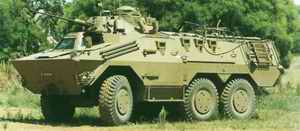 |
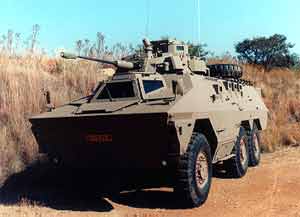 |
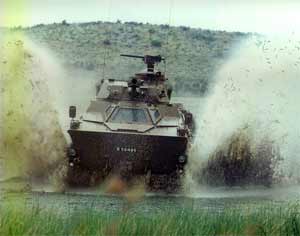 |
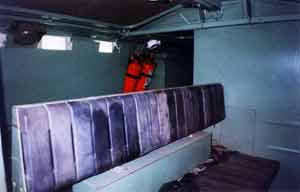 |
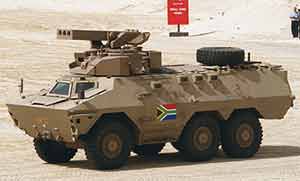 |
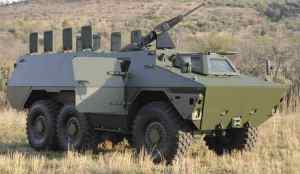 |
 |
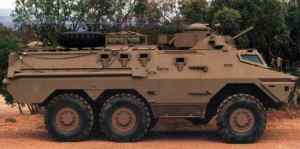 |
 |
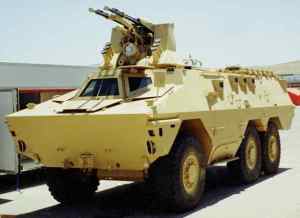 |
 |
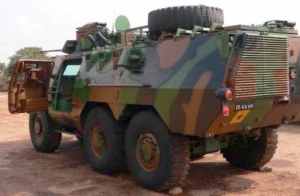 |
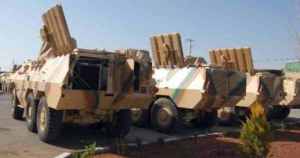 |
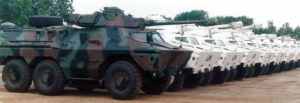 |
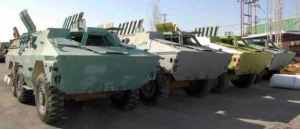 |
 |
 |
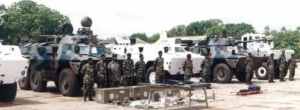 |
 |
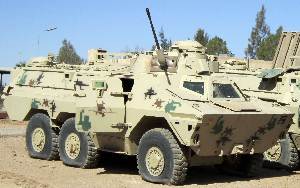 |




